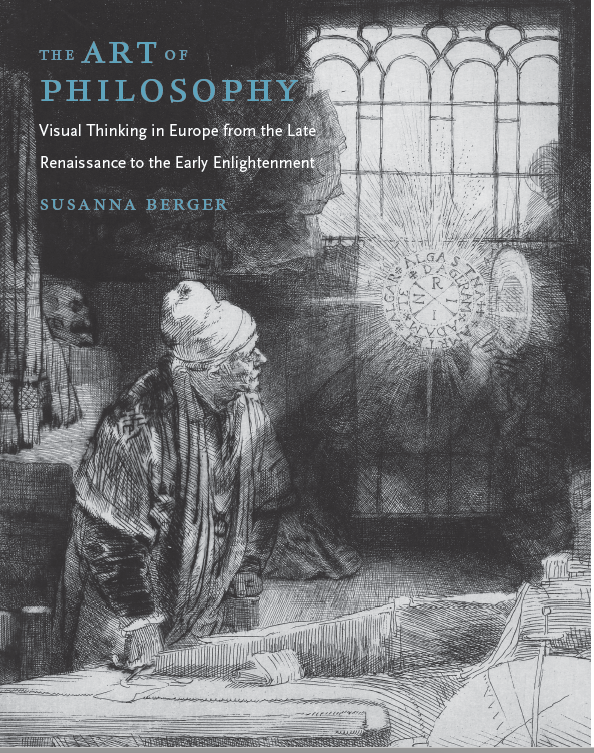
Submitted by M.L. R. Grove on Wed, 14/12/2016 - 10:36
Delving into the intersections between artistic images and philosophical knowledge in Europe from the late sixteenth to the early eighteenth centuries, The Art of Philosophy shows that the making and study of visual art functioned as important methods of philosophical thinking and instruction. From frontispieces of books to monumental prints created by philosophers in collaboration with renowned artists, Susanna Berger examines visual representations of philosophy and overturns prevailing assumptions about the limited function of the visual in European intellectual history.
Rather than merely illustrating already existing philosophical concepts, visual images generated new knowledge for both Aristotelian thinkers and anti-Aristotelians, such as Descartes and Hobbes. Printmaking and drawing played a decisive role in discoveries that led to a move away from the authority of Aristotle in the seventeenth century. Berger interprets visual art from printed books, student lecture notebooks, alba amicorum (friendship albums), broadsides, and paintings, and examines the work of such artists as Pietro Testa, Léonard Gaultier, Abraham Bosse, Dürer, and Rembrandt. In particular, she focuses on the rise and decline of the "plural image," a genre that was popular among early modern philosophers. Plural images brought multiple images together on the same page, often in order to visualize systems of logic, metaphysics, natural philosophy, or moral philosophy.
Featuring previously unpublished prints and drawings from the early modern period and lavish gatefolds, The Art of Philosophy reveals the essential connections between visual commentary and philosophical thought.
Endorsements:
"Focusing mainly on the seventeenth century, The Art of Philosophy explores the different ways in which visual culture enters into the teaching, study, and practice of philosophy. Highly original and filled with convincing arguments, this book is virtually the only treatment of a fascinating and largely unknown area in the history of philosophy."--Daniel Garber, Princeton University
"This brilliant and rich book demonstrates the function and meaning of so-called broadsides, large-scale prints that were used to assist in teaching Aristotelian philosophy in Europe during the seventeenth century. An extraordinary examination of compelling material, this is one of the most exciting works dealing with early modern art that I have come across in a long time."--Hanneke Grootenboer, University of Oxford
The book is available via the following link: https://www.amazon.com/Art-Philosophy-Thinking-Renaissance-Enlightenment/dp/0691172277/ref=sr_1_1?ie
